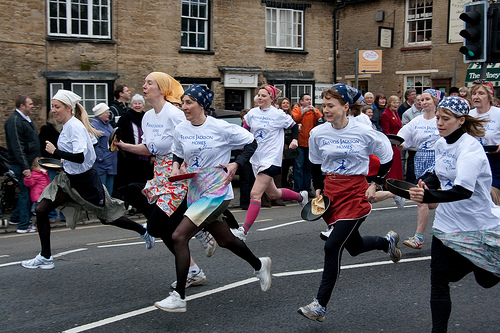Pre-game Warm-up
 |
| Well, OK. |
· Eat 2 to 4 hours prior to the race. That means waking up pretty early considering that most races start in early morning and that you need time to get to the race site.
· Eat hi-carb, but light: bagel with jam, Gatorade, banana, rice (maybe also a cup of Joe)
· Drink about 16 oz. Of water prior to the race
GAME ON!
· Drink water and sports drinks throughout the race. There should be tables with both all along the way.
· If race officials offer bagel bites, orange wedges, or the like along the way. Eat them. Orange wedges are quick delivery energy boosts. Bagels will sustain you for a few miles.
· Eat Gu and chase it down with water to avoid upset stomach and to facilitate processing
Game Over
· Drink lots of fluids, especially sports drinks, to restore depleted nutrients and glycogen
· ASAP: restore glycogen by consuming whatever carbs greet you at the finish line. Often there are bananas awaiting you. In New York, there are quite accommodating hot dog vendors, which normally I would avoid, but by the end of a marathon, I’d eat the dirty shoe off an armadillo.












